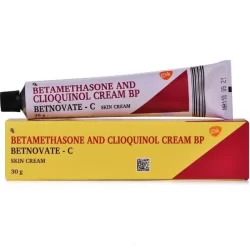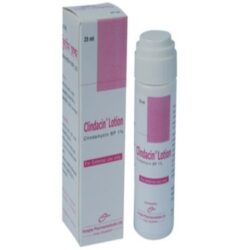Xyloken 10ml
৳ 100.30
Xyloken 10ml
Description
Medicine Overview of Xyloken 10ml 10ml Spray
Introduction
Xyloken 10ml is a local anesthetic used to temporarily numb certain areas of the body. It is used as an anesthetic lubricant to insert of instruments in the human body for medical procedures (e.g., catheters). It is also used for the treatment of symptoms of painful inflammation of the urethra and bladder. The most common side effects of this medicine include redness, rash, burning and itching on the area of application. These are usually mild and short-lived. Consult your doctor if any of the side effects persist or worry you. Before using it, tell your doctor if you have liver disease or are taking medicines for heart rhythm problems. Although medicines used on the skin are not normally affected by other medicines you should let your doctor know if you are taking any other medicines to be safe. Ask your healthcare team for advice if you are pregnant or breastfeeding.
Uses of Xyloken 10ml
Local anesthesia (Numb tissues in a specific area)
Side effects of Xyloken 10ml
Common
Allergic reaction
Application site reactions (burning, irritation, itching and redness)
How to use Xyloken 10ml
This medicine is for external use only. Use it in the dose and duration as advised by your doctor. Check the label for directions before use. Clean and dry the affected area and apply the gel. Wash your hands after applying, unless hands are the affected area.
How Xyloken 10ml works
Xyloken 10ml is a local anesthetic. It works on the skin by blocking pain signals from the nerves to brain. This numbs the area and decreases pain sensation.
Quick Tips
Xyloken 10ml is prescribed to relieve itching and pain caused by scrapes, burns, rashes, bites and eczema.
Apply it over the affected area with a clean fingertip, three to four times a day or as directed by your doctor.
Do not apply it to broken or infected areas of skin, face, eyes or eyelids unless instructed to by your doctor.
Do not cover the area being treated with airtight dressings such as bandages unless directed by a doctor, as this may increase the risk of side effects.
Avoid contact with eyes, mouth, and nose. In case of accidental contact, rinse thoroughly with water.
Consult your doctor if your skin condition has not improved after 2-4 weeks of treatment.
Inform your doctor if you are pregnant, planning pregnancy or breastfeeding.
Brief Description
Indication
Hemorrhoids, Itching, Perianal pain and itching, Postherpetic Neuralgia, Surface anaesthesia, Burning and pain and skin inflammations, Anorectal disorders, Anesthetic Lubricant for Intubation
Adult Dose
Topical as Gel/Jelly Mouth/Throat Surface anaesthesia Adult: As 2% soln (Gel): For pain: 300 mg rinsed and ejected for mouth and throat pain; or gargled and swallowed if necessary for pharyngeal pain. Not to be used more frequently than every 3 hr. Max (topical oral soln): 2.4 g/day. Anesthetic Lubricant for Intubation Indicated as an anesthetic lubricant for oral or nasal endotracheal intubation Gel (2%): Apply moderate amount to external surface of endotracheal tube shortly before use Not to exceed 600 mg/12 hr Urethral Surface Anesthesia When using Xylocaine 2% Jelly 30 mL tubes for urologic procedures, sterilize the plastic cone for 5 minutes in boiling water, cool, and attach to the tube Females Instill 2-5 mL jelly (60-100 mg) into urethra Some jelly may also be deposited on a cotton swab and introduced into urethra Allow several minutes following instillation prior to performing urological procedure Males Slowly instill 15 mL (300 mg lidocaine) into urethra or until patient experiences tension Apply a penile clamp for several minutes at the corona An additional dose of not more than 15 mL (300 mg) can be instilled for adequate anesthesia Prior to sounding or cystoscopy, a penile clamp should be applied for 5-10 minutes to obtain adequate anesthesia A total dose of 30 mL (600 mg) is usually required to fill and dilate the male urethra Prior to catheterization, smaller volumes of 5-10 mL (100-200 mg) are usually adequate for lubrication Skin Irritation Indicated for temporary relief of pain and itching caused by minor skin irritations (eg, sunburn, minor burns, minor cuts, scrapes, insect bites, minor skin irritations) Apply topically to affected area TID/QID Rectal as gel/jelly Haemorrhoids; Perianal pain and itching Adult: Apply topically or using applicator insert rectally, up to 6 times daily. Topical as Spray For dentistry and otorhinolaryngology procedures: As 10% soln (Spray): 10-50 mg sprayed to mucous membrane. Premature Ejaculation Temporarily reduces sensitivity of the penis, which helps to delay ejaculation Apply 3 or more sprays (10 mg/spray), not to exceed 10 sprays, to the head and shaft of the penis before intercourse
Child Dose
Topical as Gel/Jelly Anesthetic Lubricant for Intubation Indicated as an anesthetic lubricant for oral or nasal endotracheal intubation Jelly (2%): Apply moderate amount to external surface of endotracheal tube shortly before use Children aged <10 years: Not to exceed 4.5 mg/kg per 12 hr Older children/adolescents: Not to exceed 600 mg/12 hr Skin Irritation Indicated for temporary relief of pain and itching caused by minor skin irritations (eg, sunburn, minor burns, minor cuts, scrapes, insect bites, minor skin irritations) <2 years: Safety and efficacy not established >2 years: Apply topically to affected area TID/QID Rectal as gel/jelly Haemorrhoids; Perianal pain and itching Child: >12 yr Apply topically or using applicator insert rectally, up to 6 times daily.
Contraindication
Hypovolaemia; heart block or other conduction disturbances.
Mode of Action
Lidocaine is an amide type local anaesth. It stabilises the neuronal membrane and inhibits Na ion movements, which are necessary for conduction of impulses. In the heart, lidocaine reduces depolarisation of the ventricles during diastole and automaticity in the His-Purkinje system. Duration of action potential and effective refractory period are also reduced.
Precaution
Hepatic or renal impairment; CHF and following cardiac surgery; bradycardia; respiratory depression; porphyria; elderly or debilitated patients; pregnancy. Lactation: Distributed in human breast milk; caution advised
Side Effect
Application site reactions Abnormal sensation,Pallor or blanching when the application time is very prolonged (>2 hr),Alterations in temperature sensations,Edema,Itching,Rash Systemic reactions Unlikely due to the small dose absorbed; may occur with repeated doses or application to large surface area CNS excitation and/or depression Light-headedness, nervousness, apprehension, euphoria, confusion Dizziness,Drowsiness,Tinnitus,Blurred or double vision,Vomiting,Sensations of heat, cold or numbness,Twitching, tremors, convulsions.Unconsciousness, respiratory depression, and arrest.Cardiovascular manifestations (eg, bradycardia, hypotension, and cardiovascular collapse leading to arrest) Potentially Fatal: Hypotension and bradycardia leading to cardiac arrest; anaphylaxis.
Interaction
May increase serum levels w/ cimetidine and propranolol. Increased risk of cardiac depression w/ beta-blockers and other antiarrhythmics. Additive cardiac effects w/ IV phenytoin. Hypokalaemia caused by acetazolamide, loop diuretics and thiazides may antagonise effect of lidocaine. Dose requirements may be increased w/ long-term use of phenytoin and other enzyme-inducers.
Brand
Opsonin Pharma











Reviews
There are no reviews yet.